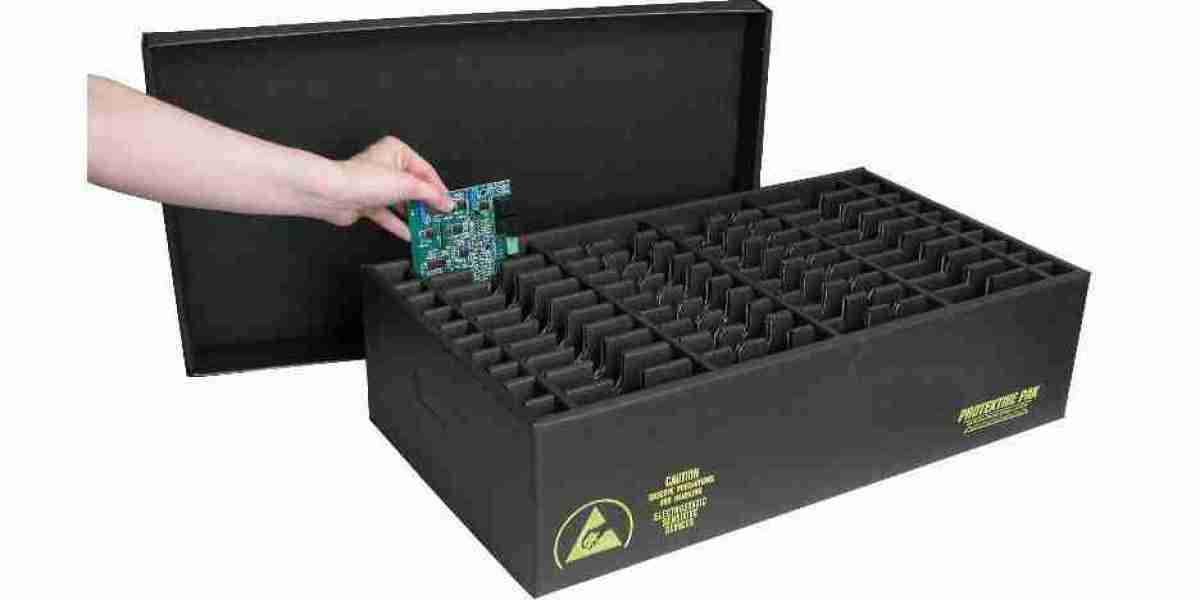The Electrostatic Discharge Packaging Market has grown over the years as industries involved in manufacturing and distributing sensitive electronics require robust protection from electrostatic damage. The increasing number of consumer electronic products, semiconductor devices, and electronic components, which are highly sensitive to electrostatic discharges, has led to an uptick in demand for effective ESD packaging solutions. However, entering this market poses several barriers, mainly technical, regulatory, financial, and logistical, which need to be overcome by aspiring market players. Understanding these barriers is critical for businesses looking to enter this fast-growing yet competitive industry.
1. Technical Challenges
The technical challenges in the ESD packaging market can significantly affect market entry. ESD packaging materials, such as conductive and dissipative plastics, metallic shields, and conductive fabrics, must meet industry-specific standards to ensure effectiveness in preventing electrostatic charges from affecting sensitive electronics. Developing these materials with the necessary quality and performance requires high research and development investments. Moreover, new entrants might find it difficult to innovate packaging materials that meet the various performance criteria demanded by clients.
Additionally, ESD packaging must provide a balanced combination of both protection and physical durability for practical use. New players will face challenges in attaining the desired durability, flexibility, and cost-effectiveness, which established competitors have already refined over time. This level of precision and understanding is critical for anyone seeking to enter the ESD packaging market and gain a competitive edge.
2. Regulatory Requirements
The ESD packaging market is subject to various stringent regulatory requirements to guarantee that packaging materials meet safety standards for electronics protection. For example, international standards like IEC 61340-5-1 and ANSI/ESD S20.20 are widely recognized and must be adhered to by manufacturers and suppliers. Compliance with these regulations demands an extensive knowledge of electrostatic principles, materials technology, and testing methodologies.
Navigating through these complex regulations, including environmental considerations such as restrictions on hazardous materials in packaging, represents a significant entry barrier. For new entrants without adequate regulatory expertise or a pre-established reputation in the industry, compliance can be time-consuming and costly, deterring many potential market players.
3. High Initial Investment
Manufacturing ESD packaging solutions requires substantial capital investment in raw materials, production infrastructure, quality testing facilities, and certification processes. Moreover, as the packaging is often specialized to suit various industries and clients, a company entering the market must be capable of quickly scaling its production capacity without sacrificing quality. A lack of financial resources can leave new businesses at a disadvantage since they might struggle to achieve economies of scale or justify their competitive prices against larger competitors.
Securing necessary investment or loans may not always be feasible for new businesses, given the high risks involved in the ESD packaging sector. These financial strains pose a significant barrier to entry for smaller and mid-sized players, limiting their ability to make strategic investments in the necessary technology or infrastructure.
4. Supply Chain and Logistics Complications
Efficient supply chain and logistics management play a significant role in the ESD packaging market. Companies need to ensure that their packaging products are easily accessible and delivered on time to electronics manufacturers, suppliers, and other clients. This requires a stable supply of high-quality materials such as conductive plastics, conductive foams, and specialty laminates from suppliers and distributors worldwide.
New entrants often struggle with establishing these complex relationships with suppliers, manufacturers, and logistics partners, especially when seeking to ensure their products' timely delivery. Additionally, global supply chain disruptions, customs regulations, and trade barriers add another level of difficulty for new companies. Their inability to access high-quality raw materials or establish effective distribution networks could severely impact their competitiveness.
5. Intense Competition from Established Players
The ESD packaging market is characterized by the presence of several established players that have spent decades perfecting their products, building brand loyalty, and developing intricate customer networks. Competition in the sector is fierce, with big corporations commanding a significant share of the market. These players have deeper pockets, enabling them to invest in technology, research, and product diversification while also driving down costs to dominate in the marketplace.
For new businesses trying to carve out a niche, it can be incredibly difficult to differentiate themselves in such a saturated market. Marketing expenses to build brand awareness, coupled with the challenges of competing with more experienced firms, may deter new entrants from taking the leap into the market.
Conclusion
While the Electrostatic Discharge (ESD) packaging market offers lucrative opportunities in terms of addressing the rising demand for protection against electrostatic risks, entry into this sector is fraught with significant barriers. Technical challenges, regulatory hurdles, high initial investments, supply chain complexities, and stiff competition from established players all create significant obstacles for newcomers. Nonetheless, with innovative approaches, targeted marketing, and deep pockets to weather the competition, it is possible for new entrants to thrive. Developing customized packaging solutions that adhere to industry standards and focusing on unique segments of the market may provide a foothold for success in this competitive space.




